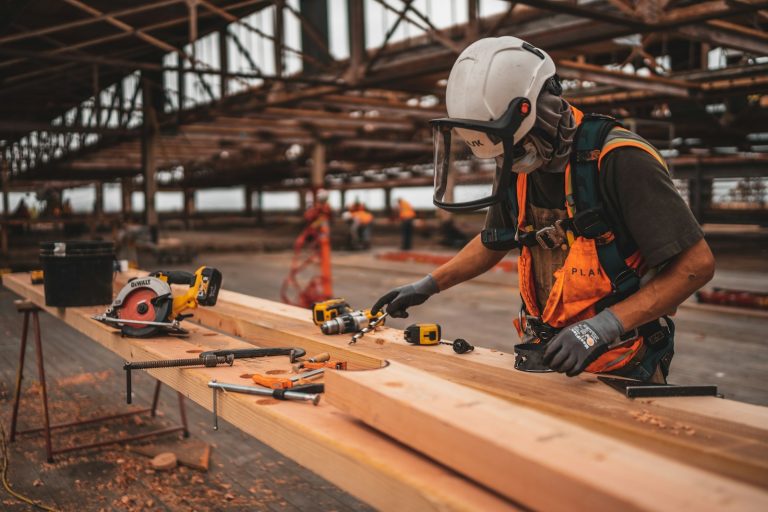Construction industry work is associated with dangers and risks. Workers in this sector face different dangers daily due to the heights they work from and the heavy machines around them.
When firms provide complete training programs, their employees will gain knowledge and skills to detect and minimize risks, thus making construction safer.
So, let’s look at some essential courses that every construction worker must undertake.
Occupational Safety and Health Administration (OSHA) Training
OSHA regulates safety and health standards in various industries, including construction. An OSHA training course may include fall prevention, scaffold safety, excavation procedures, and PPE requirements.
An OSHA course is required by law and is critical to fostering a safe working environment. These courses allow workers to recognize possible hazards, control them, and react properly when they occur.
Training on equipment and machinery operations
Construction sites are filled with heavy machinery, such as cranes and forklifts, and specialized equipment, like excavators or concrete pumps. Knowing how to operate these machines safely is essential for preventing accidents while maximizing performance.
Some common areas covered during machine-specific training sessions include pre-operational inspections, loading/unloading techniques, stability/trip hazards, and emergency shutdown procedures. Practical hands-on exercises are usually conducted so trainees can learn from experienced instructors who show them what to do in real workplace situations.
Emergency response and first aid training
Even the most precautious building sites are susceptible to accidents. In such circumstances, it sometimes becomes a matter of life and death. Suppose some people have undergone first aid training and emergency response measures. In that case, they can immediately treat injuries caused by an accident to help the victim stay alive before getting professional medical attention.
This can involve CPR, stopping bleeding, dressing burns, or stabilizing fractures. Moreover, emergency response training focuses on planning for fires, chemical spills, and natural disasters.
Gaining a CPR first aid certification online is beneficial for construction workers to manage or stabilize injuries effectively until professional help is available
EWPA Yellow Card
Construction workers who operate elevating work platforms (EWPs) such as scissor lifts and boom lifts should undergo specialized training by Australian safety standards. The Elevating Work Platform Association, EWPA, offers a “Yellow Card” program that complies with these requirements.
This Yellow Card course provides participants with the skills needed to safely operate under-11-meter boom-type elevating work platforms and scissor lifts. Units taught within this course include hazard identification, pre-start checks on equipment, lifting techniques, and proper shutdown and securing procedures.
Training on entry into confined spaces
Many construction projects involve working in tight spaces like tanks, silos, tunnels, or underground vaults. Enclosed areas such as these have unique hazards, including inadequate ventilation, limited means of access, and hazardous atmosphere possibilities.
During confined space entry training, workers learn how to identify and evaluate the dangers of confined spaces, how to enter such places, manage monitoring, and organize rescues. This training is necessary to ensure the safety of employees who undertake duties within such restricted compartments.
Electrical safety training
Construction sites are temporary places of work with continuously changing electrical requirements. Electrical hazards, from temporary power lines to underground utilities, are always encountered. Preparing workers for these risks and providing insight on how to recognize and decrease them ensures their safety and that of those close to them.
During electrical safety training sessions, some topics covered are lockout/tagout procedures, safe work practices around energized equipment, the right utilization of insulated tools and personal protective equipment, and emergency response protocols for electrical incidents.
Training in crane and rigging
Cranes and other rigging equipment are required in many construction projects that involve lifting and shifting heavy loads. However, using them wrong can lead to catastrophic accidents that may endanger the well-being of workers and property.
Crane and rigging training imparts knowledge on using and maintaining these special equipment safely. The subjects covered include load estimation, slinging methods, signal operation, and compliance with producer instructions and regulations.
Summary
To develop an informed workforce aware of the difficulties peculiar to this sector, companies must offer a wide range of educational courses to their employees in the building industry. This way, regular training boosts workers’ safety and productivity while proving the company’s commitment to doing things right, thereby creating a culture of excellence within it.
Employee training can help any construction business thrive over time. Focusing on labor safety aspects and enlightenment opportunities will result in a safer, more efficient, and environmentally sustainable construction landscape.


0 Comments